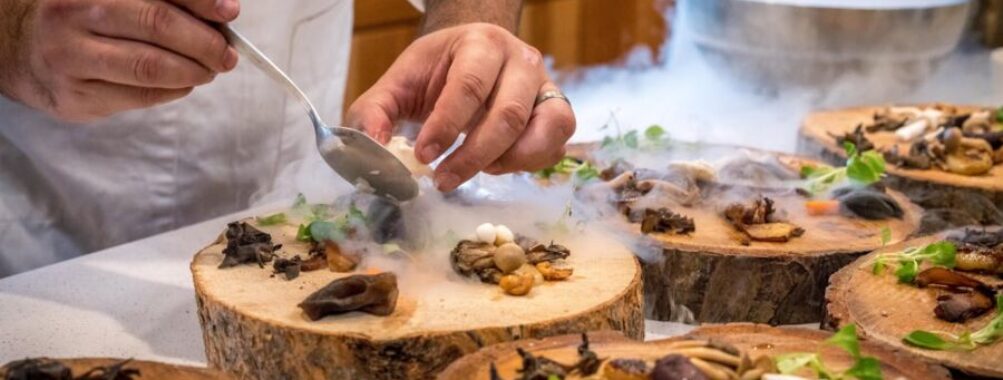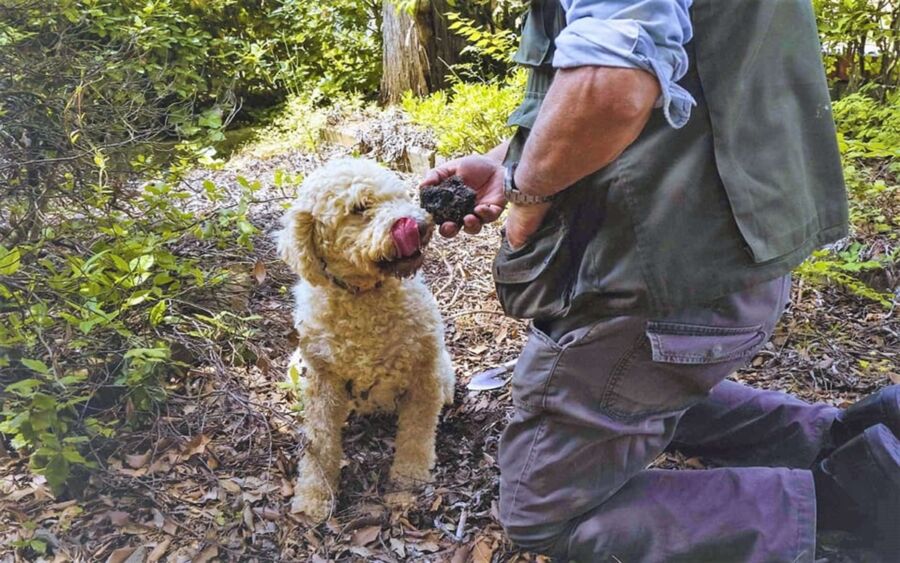
12 Unique Culinary Experiences to Taste the World Differently
I stepped off the plane in Istanbul, my senses immediately awakened by the aromatic blend of spices wafting through the air. The vibrant colors of the Grand Bazaar and the tantalizing aromas of sizzling kebabs beckoned me to explore. Culinary travel experiences offer a unique opportunity to immerse yourself in a destination’s culture, history, and traditions through its food and drink.
In Japan, I found myself kneeling on tatami mats, savoring delicate sushi and sipping fragrant green tea during a traditional kaiseki meal. The meticulous presentation and seasonal ingredients told a story of centuries-old culinary artistry. Each bite transported me deeper into the heart of Japanese culture.
Wandering the bustling streets of Mexico City, I discovered a world of flavors in every taco stand and market stall. From smoky mole sauces to crispy tlayudas, each dish revealed the rich tapestry of Mexico’s culinary heritage. I learned to make tortillas by hand and navigated the lively mercados, connecting with local vendors and their time-honored recipes.
Contents
- Omakase Dining in Tokyo
- Foraging with Indigenous Chefs in Scandinavia
- Street Food Tour in Bangkok
- Private Paella Cooking Class in Valencia
- Wine Harvest Experience in Mendoza
- Truffle Hunting in Tuscany
- Tea Ceremony in Sri Lanka
- Night Market Feasts in Taipei
- Farm-to-Table Experience in New Zealand
- Traditional Tagine Cooking in Marrakech
- Seafood Festival in Portugal
- More Travel Guides
Omakase Dining in Tokyo

As I step into a dimly lit sushi restaurant in Tokyo, the air is thick with anticipation. The chef’s eyes meet mine, a silent understanding passing between us. I’m about to embark on an omakase journey, where every morsel is a surprise crafted by the master behind the counter.
The first bite of otoro melts on my tongue, its rich fattiness balanced by a whisper of wasabi. Each piece that follows tells a story of the sea, the seasons, and centuries of culinary tradition.
I watch in awe as the chef’s hands move with practiced precision, transforming simple ingredients into edible art. The knife glides through fish with surgical accuracy, each cut revealing glistening flesh.
Tokyo’s omakase scene is a sensory wonderland. From Michelin-starred establishments to hidden gems, the city offers countless opportunities to surrender your palate to the chef’s whims.
Top Omakase Spots in Tokyo:
- Sushi Ryusuke: Stylish and chic
- Imayoshi: Oldest sushi restaurant in Otemachi
- UDATSU SUSHI: Vegetarian-friendly with English-speaking staff
To truly immerse myself, I’ve learned to trust the chef implicitly. I savor each bite slowly, letting the flavors unfold. Between courses, I engage in quiet conversation, gleaning insights into the chef’s philosophy and techniques.
As the meal progresses, I find myself transported by the rhythmic preparation and presentation of each dish. The experience transcends mere dining, becoming a celebration of culinary mastery and Japanese hospitality.

I step into the crisp Scandinavian air, breathing in the scent of pine and damp earth. My guide, a Sami chef from northern Sweden, gestures towards a patch of wild herbs peeking through the forest floor.
“These are nature’s secrets,” he whispers, plucking a sprig of tangy wood sorrel. I taste it, marveling at the burst of citrus on my tongue.
We wander deeper into the woods, our wicker baskets slowly filling with chanterelles, lingonberries, and spruce tips. The chef points out edible flowers and lichens I never would have noticed.
Later, we gather around a crackling fire. My hands are stained purple from crushing juniper berries as we prepare a traditional Sami feast. The flavors are intense and pure – smoked reindeer, cloudberry jam, birch sap syrup.
As twilight descends, we sip pine needle tea and swap foraging stories. I realize this isn’t just about food – it’s a connection to the land, a celebration of ancient wisdom.
This immersive experience has opened my eyes to the bounty of the Nordic wilderness. I’ve gained a new appreciation for seasonal, local ingredients and the art of slow food.
Street Food Tour in Bangkok

I stroll through Bangkok’s bustling streets, my senses overwhelmed by the aromas wafting from sizzling woks and steaming pots. The city’s vibrant food scene comes alive as the sun sets, with vendors setting up their stalls along Yaowarat Road.
My taste buds tingle with anticipation as I sample Som Tam, a zesty papaya salad that dances on my tongue. The perfect balance of sweet, sour, and spicy flavors encapsulates the essence of Thai cuisine.
Moving through the crowd, I’m drawn to a stall selling crispy catfish. The satisfying crunch gives way to tender flesh, complemented by a tangy mango salad. It’s a textural delight that exemplifies Bangkok’s culinary creativity.
As night falls, I sip on refreshing iced lemon tea, cleansing my palate between bites. The cool sweetness offers a welcome respite from the humid air and spicy dishes.
I finish my tour with a scoop of creamy coconut ice cream, served in a coconut shell. It’s a fitting end to an evening filled with bold flavors and culinary discoveries.
Bangkok’s street food isn’t just about eating; it’s an immersive cultural experience. I chat with friendly vendors, learning about their family recipes passed down through generations. Each bite tells a story of tradition and innovation.
Private Paella Cooking Class in Valencia

I step into a cozy Valencian kitchen, the aroma of saffron and seafood already teasing my senses. My host, a local chef, greets me with a warm smile and a glass of sangria.
The countertop is laden with vibrant ingredients – plump tomatoes, golden rice, and glistening shellfish. As I don an apron, I feel a mix of excitement and anticipation.
My instructor begins by sharing the rich history of paella, his hands moving gracefully as he demonstrates each step. I learn that authentic Valencian paella uses rabbit and snails, though seafood versions are popular too.
The sizzle of sofrito in the wide, shallow pan fills the air. I inhale deeply, savoring the sweet scent of caramelizing onions and garlic. My fingers tingle as I sprinkle in pinches of precious saffron.
As the paella simmers, we prepare tapas. I slice crusty bread for pan con tomate and carefully wrap Iberian ham around juicy melon.
Finally, the moment of truth arrives. We gather around the steaming paella, its surface a mosaic of golden rice studded with tender morsels. I take my first bite, the flavors exploding on my tongue.
This intimate class has given me more than a recipe – it’s offered a true taste of Valencia’s culinary soul.
Wine Harvest Experience in Mendoza

I step into the vibrant world of Mendoza’s wine harvest, my senses immediately alive with anticipation. The air is thick with the sweet aroma of ripe grapes and the excited chatter of locals and visitors alike.
As I join a small group tour, our guide leads us through sun-drenched vineyards. I pluck a plump Malbec grape, savoring its rich, jammy flavor on my tongue. The guide explains how this varietal put Mendoza on the global wine map.
In the winery, I witness the age-old tradition of grape stomping. Rolling up my pants, I hop into a wooden vat, feeling the cool squish of grapes between my toes. It’s a messy but exhilarating experience that connects me to generations of winemakers.
The harvest culminates in a grand festival. Streets overflow with music, dance, and the enticing scents of Argentine cuisine. I sample empanadas stuffed with local meat and cheeses, their flaky crusts melting in my mouth.
As night falls, I join locals in toasting the bountiful harvest. Raising a glass of freshly pressed Torrontés, I feel the warmth of Mendoza’s hospitality wash over me. This immersive experience has given me a true taste of Argentina’s rich wine culture.
Truffle Hunting in Tuscany

I step into the lush Tuscan forest, breathing in the earthy scent of damp soil and fragrant pine. An expert truffle hunter and his loyal dog lead our small group deeper into the woods.
The dog’s nose twitches excitedly as it picks up a scent. We watch in awe as it begins to dig, unearthing a prized black truffle. The musky aroma fills the air as the hunter gently brushes off the dirt.
Back at a charming villa, I don an apron for a hands-on cooking class. The chef demonstrates how to shave paper-thin slices of our freshly foraged truffles over handmade pasta.
My fingers work the silky dough as I learn to craft traditional Tuscan dishes. The kitchen fills with the intoxicating scent of garlic, herbs, and truffles.
Finally, we sit down to savor our truffle-infused feast. Each bite explodes with intense flavors – the earthiness of the truffle perfectly complementing the rich pasta and local wines.
This immersive experience connects me deeply to Tuscan culinary traditions. From forest floor to dining table, I’ve gained a new appreciation for the revered truffle and its role in this region’s cuisine.
Tea Ceremony in Sri Lanka

As I stepped onto a lush tea plantation in Sri Lanka’s Hill Country, the fragrant aroma of Ceylon tea enveloped me. The verdant landscape stretched as far as the eye could see, a patchwork of vibrant green bushes dotting the rolling hills.
I was invited to participate in a traditional Sri Lankan tea ceremony at a charming colonial-era bungalow. The elegant setting transported me back in time, with antique furniture and crisp white linens adorning the tables.
The ceremony began with a knowledgeable tea expert demonstrating the art of tea plucking. I carefully selected tender leaves and buds, feeling a deep connection to the land and its rich history.
Next, we moved to the tasting room, where an array of delicate porcelain cups awaited. The expert guided me through the proper brewing techniques, explaining the nuances of different tea varietals.
I savored each sip, noting the subtle flavors and aromas. From light and floral to bold and malty, each tea told a unique story of its terroir and processing method.
To complement the teas, I indulged in traditional Sri Lankan sweets like coconut rock and milk toffee. The perfect balance of flavors danced on my palate, creating a truly memorable culinary experience.
Night Market Feasts in Taipei

As I stroll through Taipei’s bustling night markets, my senses come alive. The sizzle of grills and woks mingles with the heady aroma of soy sauce and spices. Colorful stalls line the crowded streets, tempting me with an array of mouthwatering delicacies.
I start my culinary adventure at Shilin Night Market, the largest and most famous in the city. The tantalizing scent of stinky tofu wafts through the air, daring me to try this pungent local favorite. I watch as vendors deftly flip oyster omelets and grill succulent meat skewers.
At Raohe Night Market, I savor the nostalgic ambience while sampling traditional Taiwanese snacks. The crispy exterior of fried chicken gives way to juicy meat inside. I cool off with a refreshing cup of bubble tea, the chewy tapioca pearls a delightful textural contrast.
Ningxia Night Market offers a more intimate experience. I join locals queueing for steaming bowls of beef noodle soup and crispy scallion pancakes. The night air is thick with the aroma of grilled seafood and stir-fried vegetables.
To truly immerse myself in Taipei’s night market culture, I follow these tips:
- Arrive hungry and sample small portions from multiple stalls
- Use simple Mandarin phrases to order and show appreciation
- Observe how locals eat certain dishes and follow suit
- Don’t be afraid to point and gesture if language is a barrier
Each bite tells a story of Taipei’s rich culinary heritage, leaving me craving more of this vibrant food scene.
Farm-to-Table Experience in New Zealand

As I stepped onto New Zealand’s lush farmland, the aroma of fresh herbs and earthy vegetables filled the air. I found myself immersed in a vibrant farm-to-table culture that celebrates local ingredients and traditional cooking methods.
In Kaikoura, I joined a hands-on cooking class at Hapuku Kitchen. Surrounded by mountains and coastline, I foraged for wild ingredients and harvested produce straight from the garden. The satisfaction of preparing a meal with ingredients I’d gathered myself was unparalleled.
New Zealand’s farm-to-table movement isn’t just about food – it’s a way of life. I met passionate farmers, fishers, and artisans who take pride in supplying restaurants with the freshest local ingredients.
At Hiakai in Wellington, I savored innovative dishes showcasing Māori and Pasifika ingredients. The chef’s modern twist on traditional flavors opened my eyes to New Zealand’s rich culinary heritage.
Visiting farmers’ markets became a weekly ritual. I chatted with growers, sampled artisanal cheeses, and filled my basket with seasonal fruits and vegetables. The vivid colors and intense flavors of just-picked produce were a feast for the senses.
To truly embrace New Zealand’s farm-to-table ethos, I recommend:
- Participating in cooking classes using local ingredients
- Visiting farmers’ markets and meeting producers
- Dining at restaurants committed to sourcing locally
- Staying at farm stays to experience rural life firsthand
My farm-to-table journey through New Zealand was a delicious adventure that connected me deeply to the land and its people.
Traditional Tagine Cooking in Marrakech

As I stepped into the bustling medina of Marrakech, the aroma of exotic spices filled the air. My senses were instantly awakened to the culinary adventure that awaited me.
I decided to immerse myself in the local food culture by taking a traditional tagine cooking class. The experience began with a trip to the vibrant local market, where I handpicked fresh ingredients alongside my Moroccan chef guide.
Back at a beautiful riad, I was greeted by a warm family who welcomed me into their home. The kitchen was a sensory delight, with colorful spices and aromatic herbs lining the shelves.
Under the expert guidance of the chef, I learned the art of layering flavors in a clay tagine pot. The slow-cooking process allowed the spices to meld perfectly with tender meat and vegetables.
As we waited for our creation to simmer, I sipped on sweet mint tea and listened to stories of Marrakech family life. The anticipation built as tantalizing aromas wafted through the air.
Finally, it was time to lift the conical lid and reveal our masterpiece. The steam carried the scent of saffron, cumin, and preserved lemon. I savored every bite of the succulent, flavor-packed dish.
This hands-on experience taught me more than just a recipe. It gave me insight into the heart of Moroccan cuisine and culture. I left with new skills, fond memories, and a deeper appreciation for the art of tagine cooking.
Seafood Festival in Portugal

I’ve discovered a seafood lover’s paradise in Portugal’s Algarve region. The salty sea breeze carries the aroma of grilled sardines and freshly caught shellfish, enticing me to explore the local seafood festivals.
In Portimão, I find myself swept up in the lively atmosphere of the Sardine Festival. The air is thick with smoke from grills lining the riverbank, where skilled cooks deftly prepare the region’s prized sardines.
I wander through Olhão’s Seafood Festival, marveling at the colorful displays of octopus, clams, and prawns. Local chefs demonstrate traditional cooking techniques, and I eagerly sample their creations, savoring the briny flavors of the Atlantic.
The Lagos Seafood and Wine Festival offers a perfect pairing of local vintages with the day’s catch. I sip crisp white wine while indulging in succulent oysters, feeling the vibrant energy of the crowd around me.
At Vilamoura’s Shellfish Festival, I join locals in cracking open steamed mussels and dipping crusty bread into rich, garlicky broths. The sound of live music fills the air as I chat with fishermen about their craft.
These festivals aren’t just about eating; they’re a celebration of maritime heritage. I learn to distinguish different fish species and try my hand at traditional net-mending techniques, connecting with centuries-old fishing traditions.



